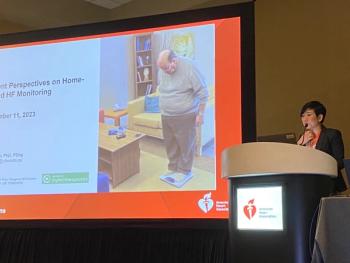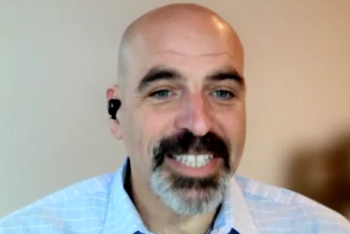
How Providers Reduce Emergency Department Use
Noticing that ED use was rising, 250 PCPs set out to drive down inappropriate visits.
William "Tom" Thompson, a family medicine physician in southwestern Indiana, doesn't want his patients to visit the emergency department (ED) for conditions that he could easily treat in his practice-say, a urinary tract infection, acute stomach pain, or even complications of congestive heart failure.
“I can see a patient five days in a row and it would be cheaper than one day in an emergency room,” Thompson says.
Yet until 2017, Thompson-like many primary care providers-had few resources to track his patients’ utilization of services outside of his office, such as inappropriate ED visits. Nor did he have the time or tools to address unnecessary high-cost utilization with his patients.
Today, as a participating physician in Deaconess Care Integration, a
The challenge
Physician engagement is difficult in any setting. At Deaconess, strategies and solutions for engagement must be adaptable across a wide range of settings, from large clinics in downtown Evansville to small rural practices. The ACO’s 250 primary care physicians are spread across three states (Indiana, Kentucky, and Illinois) and six health systems and use a variety of electronic medical record systems.
Deaconess turned its gaze toward ED utilization because "the trend was very high and moving in the wrong direction compared to other ACOs and to other health systems in our region," says Fred Wallisch, MD, the ACO's medical director.
The problem came down to two issues: patient education and access. Patients often didn't know which ailments called for primary care, urgent care, or the ED. In addition, if they sought an appointment with their family physician, a slot might not be available soon enough.
Let physicians drive the change, then let others help shoulder the work
Deaconess' physician-centered approach sought to combine providers' wisdom with the infrastructure-tools, incentives, and analytics-needed to translate that knowledge into everyday practice.
To get physician buy-in, the ACO needed primary care providers to champion the change, but not to get bogged down in the details of implementation. It partnered with its Physician Advisory Council to identify seven changes to practice operations for improving ED utilization. Some were simple and straightforward, such as revising the after-hours voicemail greeting to help patients determine the best care setting. Others required more substantial change, such as identifying ways to accommodate same-day appointments, or adding appointment slots in the early morning, evening or weekend. The changes required the coordination of entire physician practices, particularly practice managers.
Related:
"One of the big drivers was not putting all of the burden on the physicians," Wallisch says. "Alternate office hours and same-day appointments do involve physician scheduling, but they also involve the whole office."
The primary care practices could decide how many of the seven interventions they wanted to adopt.
Provide tools and incentives for implementation
For each of the seven changes, Evolent Health, a company providing an integrated value-based care platform to the nation's leading provider and payer organizations, created a toolkit to guide practices through the steps of implementing the change. The toolkits are highly detailed-for instance, providing a suggested script for the after-hours voice mail message. But they're flexible enough for practices to adapt them to their own settings and circumstances.
Toolkits in hand, a population health manager would visit the practices to discuss the initiative, educate staff and help work through barriers.
"Our approach has been to try to understand what is going on in that office to begin with," Wallisch says. "What are the work flows? What are the pain points? We spend a lot of time trying to get to know the offices. Every office is different."
When Evolent began rolling information out to practices in April 2017, some physicians were leery of the changes and feared major burdens if they adopted them to their operations, but as they made changes physicians found it wasn’t a burden. Changing the schedule or adding additional hours contributed to better organization and continuity of care.
Key to many of the changes was training and empowering staff-for instance, to know which cases could be seen in the primary care practice and which should be referred to the ED or urgent care. The ACO helped the practices create detailed protocols to guide staff members to triage patients based on the preferences of their practice's physicians. They didn't have to say, I think this is what the provider wants. It was laid out in black and white.
Use actionable data and appeal to professionalism
Throughout the project-and continuing to this day-physicians get performance reports that include data about their patients’ utilization of healthcare services, including the ED. It's data that Thompson had never seen before.
"At our quarterly meetings they're able to provide me with a detailed list of how sick our patients are, how many times they've been in the emergency room, how much money I'm spending in this practice," he says. Equipped with this data for the first time, he has been able to have more discussions with patients about topics such as the best times to use the ED.
The results
Participation in the project far exceeded the ACO's goals. About 85% of the ACO's primary care providers joined the program. And the majority of those who participated adopted five or more changes. "We were hoping for 200 to 300 different changes within the offices," Wallisch says. "We ended up with 650."
As adoption went up, ED utilization went down, by 13% among ACO members and 30% in the commercial patient population.
"Every quarter we have seen a reduction in utilization of the emergency department by our ACO patients," Wallisch says.
Amy Kennedy is a population health manager at
Newsletter
Get the latest industry news, event updates, and more from Managed healthcare Executive.





















































